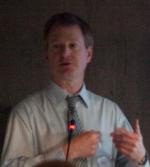From Dollars & Cents to Success: Financial Incentive Programs for Historic Preservation
California is unique in its variety of available financial incentives for historic preservation. Many projects rely on a combination of incentives and programs, including the Mills Act, Low Income Housing Credits, Easements, Community Development Block Grants, and/or Federal Rehabilitation Tax Credits.
This workshop will examine some of the most common financial incentives that make or break a preservation project. You will dig into the financial and legal aspects of historic preservation incentives early in the day. After lunch you’ll engage with case studies from the Sacramento area to see which projects are best suited for each incentive. Case studies will also address the complexities and process of application and implementation. Determine how to calculate the amount of the potential cost off-set and understand which expenses are eligible under each program. Participants will be asked to complete sample calculations using example projects.
Become Acquainted With...
- Financial benefits and limitations for various kinds of historic preservation project incentives, both federal and local.
- Identify approaches for different types of projects and how to combine incentives.
- Estimate the amount of expected benefit and total project cost.
- Examples of how the Secretary of Interior’s Standards for Rehabilitation are involved in certain financial incentive programs.
Documents and Downloads
- Rehabilitation Tax Program Basics
- Tim Brandt Presentation - References
- LA Conservancy Incentives Quick Guide
Speakers
 |
Timothy Brandt, AIA, LEED AP is the Senior Restoration Architect for the California State Office of Historic Preservation. As supervisor of the Architectural Review Unit his responsibilities include the statewide review of Federal tax certification projects and providing architectural review and technical assistance to federal and state-mandated programs, government agencies, and the general public. Work in the historic preservation field has included implementation of Federal regulations, eligibility determinations for the National Register of Historic Places, review of project effects, historic reports, surveys, guidelines, outreach and education, and construction monitoring.Past project experience has included the Bradbury Building, the Hollywood Walk of Fame, Fox Studios, and Section 106 review for FEMA at the 1994 Northridge Earthquake Disaster Field Office.Tim has served on the City of Sacramento Preservation Commission and the AIA Los Angeles Board of Directors, chaired the AIA/LA Historic Resources Committee and worked with the AIA’s Built Environment Education Program (BEEP) architecture in the schools program, leading to an exchange with a similar program in Russia. As an historic preservation architect, Tim traveled to India on a professional exchange program with Rotary International.Tim has a MArch from the University of Pennsylvania and a BArch from the University of Southern California. |
 |
Roberta Deering, LEED AP, oversees the City of Sacramento’s Certified Local Government preservation program, including staff support to the City’s Preservation Commission, preservation project and environmental review, historic resources survey, nomination, and incentives programs, including a Historic Places Fund to provide matching-grant assistance for private historic rehabilitation projects. She also serves as the executive staff for Sacramento Heritage, Inc., a public/private non-profit organization chartered by the City. Roberta has over thirty years of experience in historic preservation planning, public policy, advocacy, fundraising, consulting, training and management. She has worked in the public and private non-profit sectors, serving as Executive Director of the California Preservation Foundation, and Director of the Chicago Office of the State of Illinois Historic Preservation Agency, among other positions. Roberta holds a Bachelor of Arts degree from the University of California - Davis, and a Masters of Urban Planning from the University of Oregon. |
 |
Roy Chou is a principal in the San Francisco office of Novogradac & Company LLP. Mr. Chou has experience in affordable housing and community development, including new markets tax credit (NMTC) and historic rehabilitation tax credit (HTC) transactions. He has worked extensively on NMTC allocation applications, NMTC compliance, financial projections models and forecasts, financial statement audits and tax return preparation. He is also a frequent speaker at the preconference workshops at the firm’s NMTC and HTC conferences.Mr. Chou has contributed articles to various publications, including the Novogradac Journal of Tax Credits. He received a bachelor’s degree in business administration with concentrations in accounting and finance from California Polytechnic State University, San Luis Obispo. Mr. Chou is licensed in California as a certified public accountant. |
| Shannon Lauchner is a State Historian II working in the Local Government Unit of the California Office of Historic Preservation (OHP). Over the last seven years working at OHP Shannon has worked with a variety of preservation programs. She currently serves as the Mills Act Coordinator, is responsible for reviewing HUD funded projects for compliance with Section 106 of the National Historic Preservation Act, helps to administer the Certified Local Government (CLG) Program, and provides training and technical assistance to local governments and the public with regards to local historic preservation programs. | |
 |
Naomi Miroglio has been with Architectural Resources Group since 1985 and became a Principal in 1999. She has designed numerous award-winning projects for historic properties, including seismic strengthening, adaptive reuse, preservation and tax credit projects.Naomi has led the adaptive reuse of multiple buildings at the Culinary Institute of America, Greystone including the Rudd Center for Wine Education, a 2002 California Preservation Design Award, and the William’s Center for Flavor Discovery, a 2004 Napa County Landmark Award. She brings experience working with diverse user groups and development committees in evaluating and rehabilitating significant facilities. Naomi’s professional background is augmented by training in architectural conservation at the International Centre for Conservation, Rome, Italy. |
